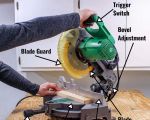- What to Look for in a Handsaw for Cutting Drywall
- Best Types of Handsaws for Cutting Drywall
- Top Handsaw Recommendations for Drywall Cutting
- How to Properly Use a Handsaw for Drywall
- Maintaining Your Handsaw for Drywall Cutting
- Why Choose a Handsaw Over Other Tools for Drywall?
What to Look for in a Handsaw for Cutting Drywall
When it comes to cutting drywall, having the right tool can make a huge difference in the ease and quality of your work. A handsaw, while often overlooked in favor of power tools, remains an essential tool for any DIY enthusiast or professional handyman. The key to selecting the best handsaw for cutting drywall lies in understanding the characteristics that make a saw effective for the task at hand.
The first thing to consider is the type of blade. Drywall is relatively soft, but the material can still be challenging to cut if the saw blade isn’t suited for the job. You’ll need a saw with a fine-toothed blade that provides smooth, controlled cuts. The handle also plays a significant role in the comfort and precision of your work. Look for a handsaw that offers a secure, ergonomic grip that minimizes strain during prolonged use.
Another factor to consider is the length of the blade. While a longer blade can offer more control when making straight cuts, a shorter blade may provide greater maneuverability in tight spaces. Think about the type of cuts you’ll be making—whether they are straight, angled, or curved—and choose a handsaw that suits your specific needs.
Best Types of Handsaws for Cutting Drywall
Not all handsaws are created equal, and understanding the different types of handsaws available for drywall cutting can help you make an informed decision. Below, we’ll explore the different types of handsaws that work best for cutting drywall.
1. The Drywall Saw
Perhaps the most iconic saw for cutting drywall, the drywall saw features a pointed, tapered blade that’s designed for easy penetration into drywall. These saws are typically used for cutting holes for outlets, light switches, or other openings in drywall. Their narrow blade allows for precise, controlled cutting, making them ideal for cutting drywall without creating unnecessary mess. If you're working on smaller projects or need to make detailed cuts, a drywall saw might be the best option.
2. The Hand Saw with a Fine-toothed Blade
Another excellent choice for drywall cutting is a traditional hand saw with a fine-toothed blade. While not as specialized as the drywall saw, a hand saw offers versatility for larger cuts. Its fine teeth help ensure clean cuts without tearing the paper backing on the drywall, which is essential for creating a professional-looking finish. This type of saw works well for cutting large panels of drywall in a straight line and is often used by professionals for drywall installation.
3. The Jab Saw (Keyhole Saw)
The jab saw, or keyhole saw, is another tool commonly used for drywall cutting. It features a long, pointed blade that can be used to punch into drywall and start a cut. The jab saw is great for cutting smaller holes and intricate shapes. If you're working with a lot of small, detailed cuts or making adjustments to existing drywall installations, a jab saw can be a handy tool to keep in your toolkit.
Top Handsaw Recommendations for Drywall Cutting
Now that we’ve discussed the types of handsaws that are best for cutting drywall, let’s dive into some of the top handsaw recommendations available on the market. These options have been selected for their performance, ease of use, and durability, ensuring that you get the best results every time you cut drywall.
1. Stanley 15-334 6-Inch FatMax Jab Saw
The Stanley 15-334 is a well-regarded jab saw that’s perfect for cutting drywall. Its 6-inch blade is durable and features a pointed tip, making it easy to start cuts even in tight spaces. The handle is ergonomically designed for comfort and control, reducing hand fatigue during prolonged use. With its sharp teeth and compact size, the Stanley jab saw is a favorite among DIYers and professionals alike. Whether you’re cutting holes for electrical boxes or making precise adjustments, this saw will get the job done effectively.
2. Irwin Tools 1794462 ProTouch Drywall Saw
If you’re looking for a handsaw that combines comfort and precision, the Irwin Tools ProTouch Drywall Saw is an excellent choice. This saw features a sharp, durable blade that’s designed to cut through drywall smoothly without damaging the surface. The ProTouch handle provides a secure, comfortable grip, even when your hands are sweaty or oily. The saw’s lightweight design makes it easy to handle, even for extended periods. With this saw, you’ll get clean, accurate cuts every time.
3. Craftsman 9-23454 12-Inch Fine Tooth Hand Saw
For larger drywall cutting projects, the Craftsman 12-Inch Fine Tooth Hand Saw offers both precision and versatility. This saw is designed with fine teeth that are ideal for cutting drywall smoothly. The 12-inch blade allows for larger, straight cuts, making it a great choice for cutting through big panels of drywall. The handle is designed for maximum comfort, reducing hand fatigue and allowing you to work longer without discomfort. It’s a reliable choice for anyone who frequently works with drywall and other materials.
How to Properly Use a Handsaw for Drywall
Using a handsaw to cut drywall requires precision and technique to ensure smooth, accurate cuts. Here are a few steps to help you get the best results:
1. Mark Your Cut Line
Before you start cutting, always measure and mark the cut line on the drywall. Use a pencil or chalk to make a visible line, ensuring that the cut is straight and accurate. For larger cuts, use a level or square to ensure the line is perfectly aligned. I’ve found that using a guide will save you time and effort by preventing mistakes.
2. Secure the Drywall
Secure the drywall in place to prevent movement while cutting. You can do this by either clamping the drywall or having a second person hold it steady. If the drywall is loose, it can shift or vibrate, causing uneven cuts. Properly securing the material will give you better control over your saw and result in cleaner cuts.
3. Cut Slowly and Steadily
When cutting drywall, take your time and use slow, controlled movements. This will help you maintain accuracy and reduce the risk of jagged edges. I’ve noticed that rushing the process leads to mistakes or uneven cuts that require additional work to correct.
Maintaining Your Handsaw for Drywall Cutting
Like any tool, your handsaw will perform best when it’s well-maintained. Regular maintenance will ensure that the blade stays sharp and the handle remains comfortable to use. Here are some tips for maintaining your handsaw:
1. Clean the Blade
After each use, clean the blade to remove any drywall dust and debris that may have accumulated. Use a dry cloth or a soft brush to clean the blade thoroughly. This will prevent the buildup of dust that could reduce the saw’s effectiveness.
2. Sharpen the Blade
If the blade starts to feel dull, consider sharpening it or replacing it. A sharp blade will cut through drywall with ease, making your work quicker and more efficient. Some handsaws are designed to be resharpened, so be sure to check the manufacturer’s instructions before attempting this.
3. Store the Saw Properly
When not in use, store your handsaw in a dry place to prevent rusting. A tool box or a designated tool rack is ideal for keeping your saw safe and easily accessible.
Why Choose a Handsaw Over Other Tools for Drywall?
While power tools like rotary cutters or circular saws are often used for cutting drywall, handsaws have several advantages that make them a great choice for certain jobs:
1. Precision and Control
Handsaws offer more precision and control compared to power tools. When making smaller, intricate cuts, a handsaw allows you to work with more accuracy, ensuring cleaner, more detailed cuts. I find that handsaws are especially useful for making cuts around electrical boxes or in tight spaces where power tools might be too bulky.
2. Lower Cost
Handsaws are typically much more affordable than power tools, making them an excellent option for DIYers who want a cost-effective solution for cutting drywall. For smaller projects or occasional use, a handsaw is often all you need.
3. Portability
Handsaws are lightweight and portable, making them easy to carry around your workspace. Unlike power tools that require electricity or batteries, handsaws can be used anywhere, even in areas without power sources. This makes them ideal for small jobs or outdoor projects.
If you’re looking for the best tools for your next drywall project, be sure to check out ToolNest for high-quality handsaws and other essential tools. They offer a wide selection of reliable tools designed to make your work easier and more efficient.
<> SEO Title: Best Handsaws for Cutting Drywall | Top Recommendations and Tips SEO Keywords: best handsaws for cutting drywall, drywall saw, jab saw for drywall, cutting drywall with handsaw, how to use a handsaw for drywall, maintaining a handsaw for drywall SEO Description: Discover the best handsaws for cutting drywall, including top recommendations, tips for use, and maintenance advice. Learn how to select the right saw for your drywall projects and improve your cutting skills.








